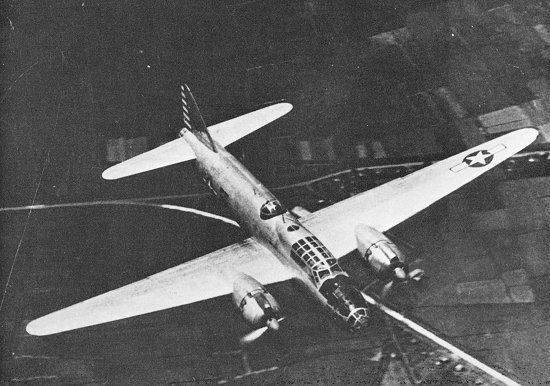 | ||
A medium bomber is a military bomber aircraft designed to operate with medium-sized bombloads over medium range distances; the name serves to distinguish this type from larger heavy bombers and smaller light bombers.
Contents
The term was used prior to and during World War II, based on available parameters of engine and aeronautical technology for bomber aircraft designs at that time. After the war, medium bombers were replaced in world air forces by more advanced and capable aircraft.
History
In the early 1930s many air forces were looking to modernize their existing bomber aircraft fleets, which frequently consisted of older biplanes. The new designs were typically twin-engined monoplanes, often of all-metal construction, and optimized for high enough performance and speed to help evade rapidly evolving fighter aircraft designs of the time. Some of these bombers, such as the Heinkel He 111, Junkers Ju 86, Savoia-Marchetti SM.79, Douglas B-18, and Armstrong Whitworth Whitley were developed from or in conjunction with existing airliners or transport aircraft.
The World War II-era medium bomber was generally considered to be any level bomber design that delivered about 4,000 pounds (1,800 kg) of ordnance over ranges of about 1,500 to 2,000 mi (2,400 to 3,200 km). Typical heavy bombers were those with a nominal load of 8,000 pounds (3,600 kg) or more, and light bombers carried up to 2,000 lb (907 kg).
These distinctions were beginning to disappear by the middle of World War II, when the average fighter aircraft could now carry a 2,000 lb (907 kg) bombload. Advances in powerplants and designs eventually allowed light bombers, tactical bombers, and later jet fighter-bombers to take over the roles performed by mediums.
After the war, use of the term generally vanished; some of this was due to mass demobilization of the participant air forces' existing equipment, and the fact that several of the most-produced medium bomber types were now technologically obsolescent. Although a number of later aircraft were designed in this performance and load-carrying range, they were henceforth referred to as tactical bombers or strike aircraft instead. Examples of post-war mediums include the English Electric Canberra (along with its derived U.S. counterpart, the Martin B-57) and the Soviet Ilyushin Il-28 "Beagle".
Subsequent to World War II, only the U.S. Strategic Air Command ever used the term "medium bomber" in the 1950s to distinguish its Boeing B-47 Stratojets from somewhat larger contemporary Boeing B-52 Stratofortress "heavy bombers" in bombardment wings (older B-29 and B-50 heavy bombers were also redesignated as "medium" during this period). This nomenclature was purely semantic and bureaucratic, however as both the B-47 and B-52 strategic bombers were much larger and had far greater performance and load-carrying ability than any of the World War II-era heavy or medium bombers.
